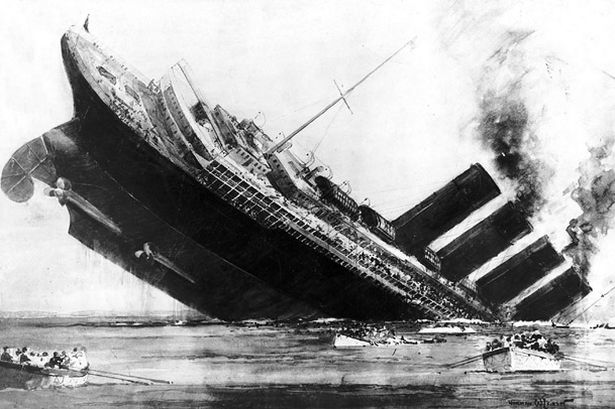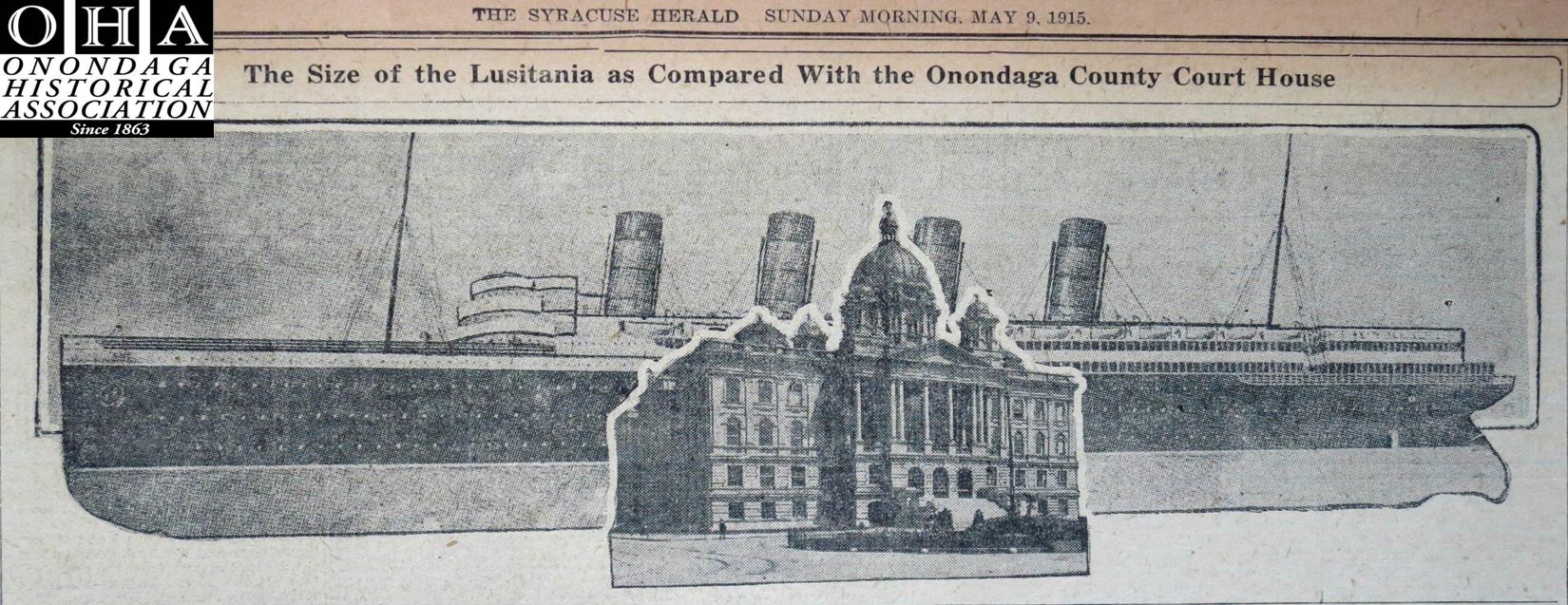
On May 7th, 1915, a British ocean liner named the Lusitania was sunk by a German U-boat after being hit with a torpedo. Of the 1,959 on board, 1,198 people drowned, including 128 Americans, some with Central New York connections. Mr. Allen D. Loney lived in Manhattan, but spent time growing up in Skaneateles. Allen was traveling to his home in England with his wife and their 16 year old daughter, Virginia, when the ship was struck. Only Virginia survived, due in part from her time learning to swim in Skaneateles Lake. According to a letter written Mrs. Harry Sedgwick, who was taking care of her after the incident, she mentions that “Virginia was very brave” during the ordeal. Virginia passed away on April 4th, 1975.
A little less than a month later, on June 3rd, 1915, the Syracuse Herald ran a story based on a letter from Hugh R. Bryce who noted other womens’ bravery upon the sinking ship. In the letter to Bryce’s friend, David Boyd, he explains how the women kept their cool aboard the Lusitania.
WOMEN ON LUSITANIA
SHOWED NOTABLE PLUCK
Hugh R. Bryce, Who, With His Wife, Was Rescued From Liner,
Writes to Friend
“The women were far ahead of men in coolness and pluck when the Lusitania sank, according to a letter received in this city from Hugh R. Bryce, the former Syracuse man who was rescued with his wife. In a letter to David Boyd, superintendent of the Syracuse office of the Metropolitan life Insurance Company, Mr Bryce says that he is recovered from the trying experience and is again feeling well. Mr. Bryce and his wife were at lunch when the Lusitania was torpedoed. He put his wife into a lifeboat before helping other ladies.’Suddenly,’ he said, ‘the boat gave an extra heavy lurch and we all landed in the water. A fireman pulled me in and we got the women in all right. After that we cruised around for a while, picking up as many as we could. The Lusitania then began to heel over and we thought that the funnels would swamp us, but we seemed to drift outwards from there and after they were submerged we drifted right over where the boat had sunk. The last I saw of her was her stern raised up in the air, and then she went down. So far as I could see, there was no panic and the women behaved magnificently. After seeing their behavior, the rankest anti-suffragette would agitate to give them all the vote. They were far ahead of the men in coolness and pluck. All this took place in about twenty minutes. So we had no time to look for life bells or anything else.'”


